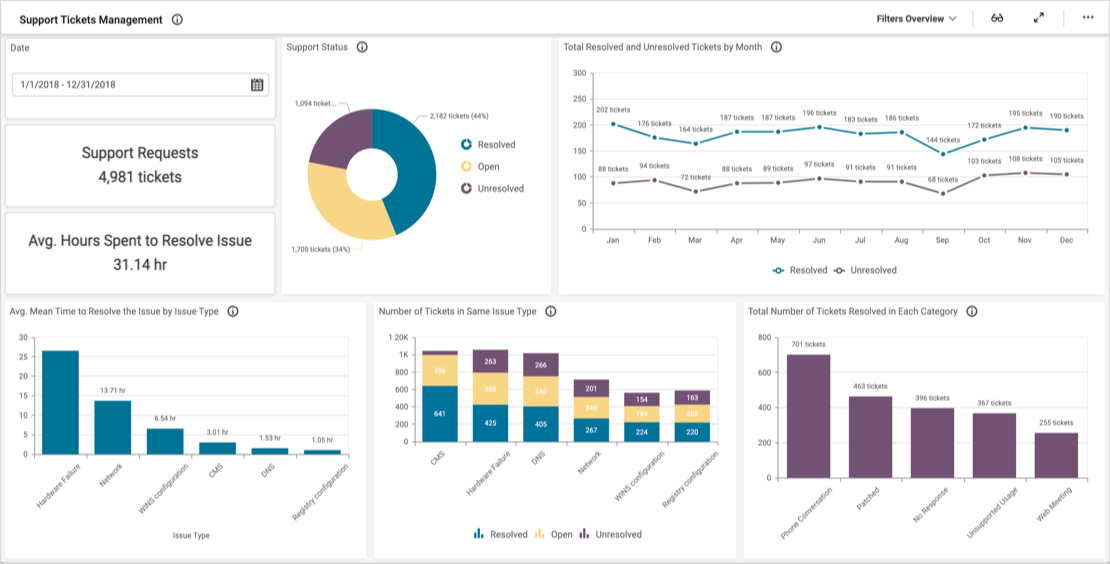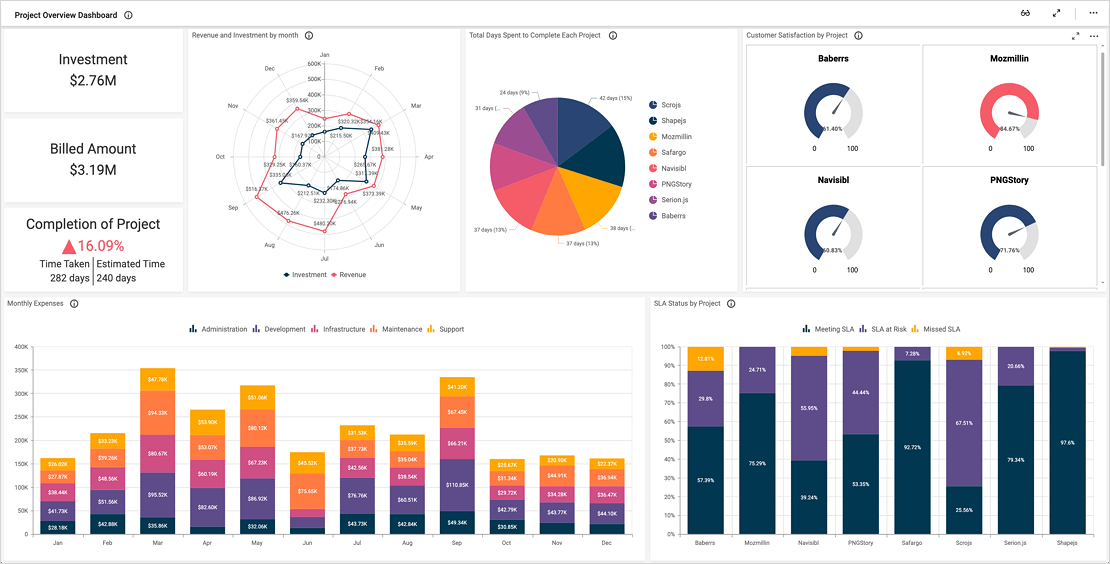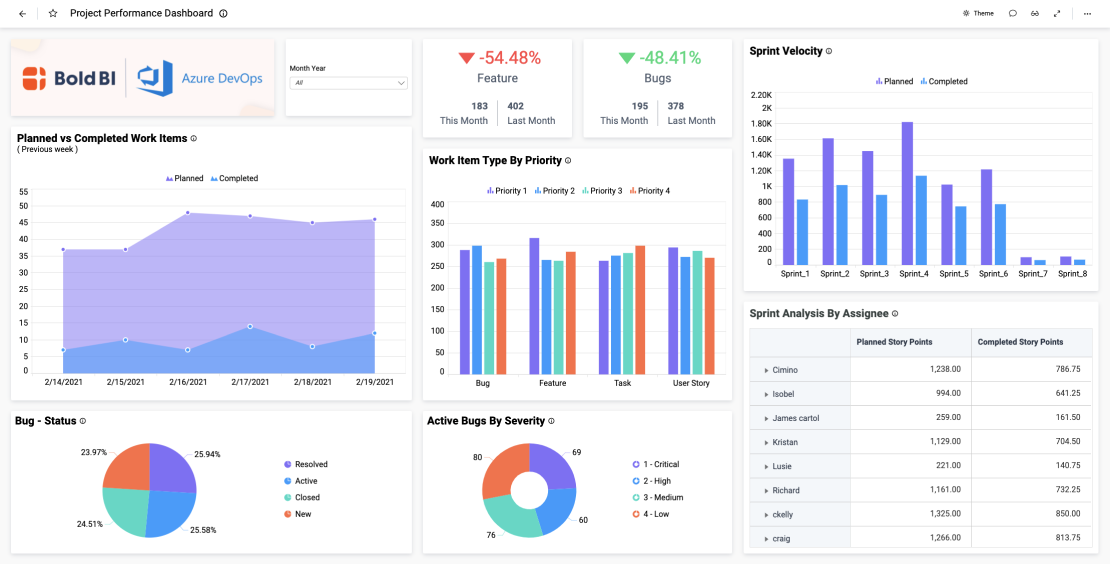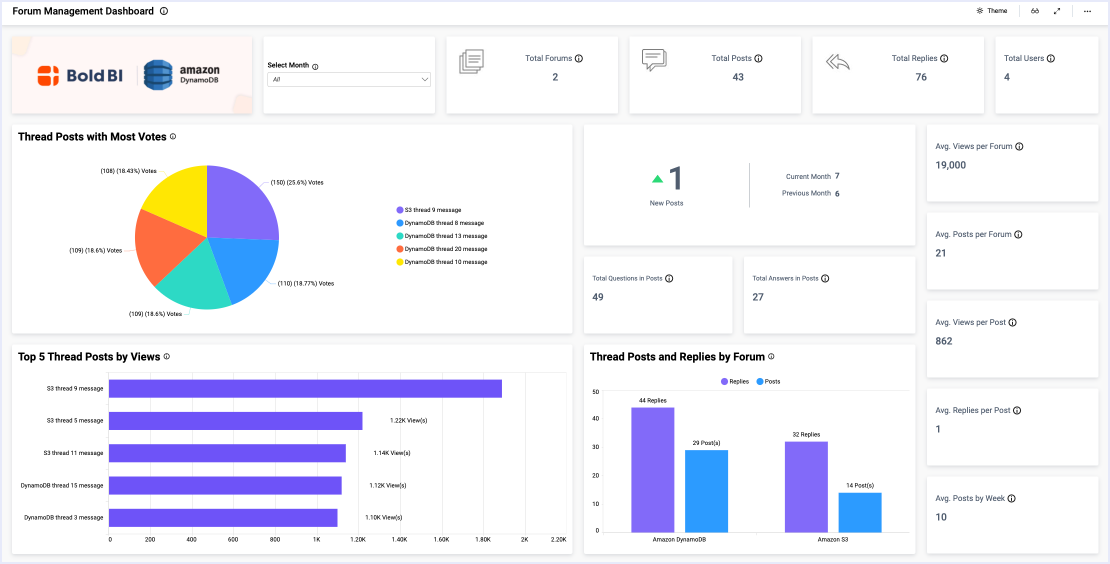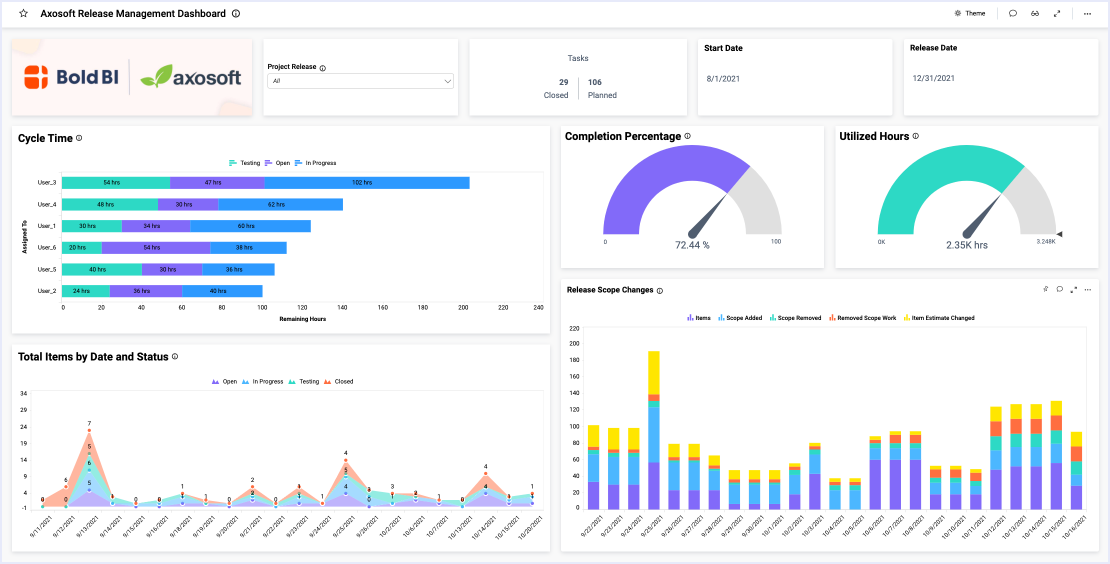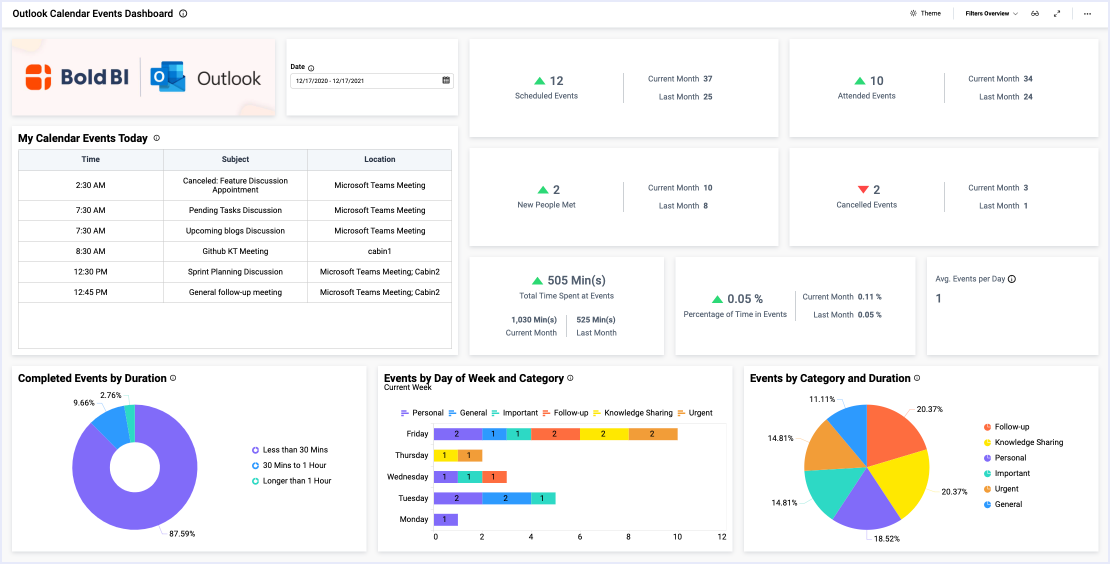- Firstly, how many unresolved issues does the team need to address? How does this month’s number of created and closed issues compare to last month’s?
- Secondly, what is our average resolution time?
- Thirdly, how do these issues break down by status, project, and component?
- Finally, how do the outstanding issues break down by priority and project?
Track Issue Statuses and Details
With the card widgets at the top of the dashboard, project leaders can quickly see the total number of unresolved issues, the average resolution time, and the number of created and closed issues (along with how those numbers compare to the previous month’s).
Then, the Created vs Closed Issues spline chart illustrates the number of open and closed issues the team dealt with each day over a one month period. The Issues by Status doughnut chart details the number of issues that are open, closed, in progress, postponed, and awaiting review.
Finally, the two widgets at the bottom of the dashboard provide additional insight into the projects associated with the team’s issues. The Issues Count by Project and Components widget allows viewers to track the total number of issues associated with each project and component. Similarly, the stacked column chart in the bottom right corner of the dashboard displays the number of outstanding issues by priority and project.
Filter Your Data
It is also worth noting that this dashboard offers two filtering options. Viewers can filter data by project, component, or both. This feature is especially useful for leaders who want to focus their analysis on a specific set of data.

